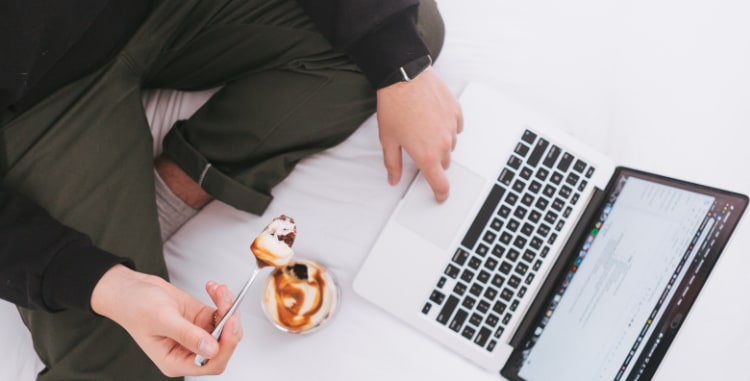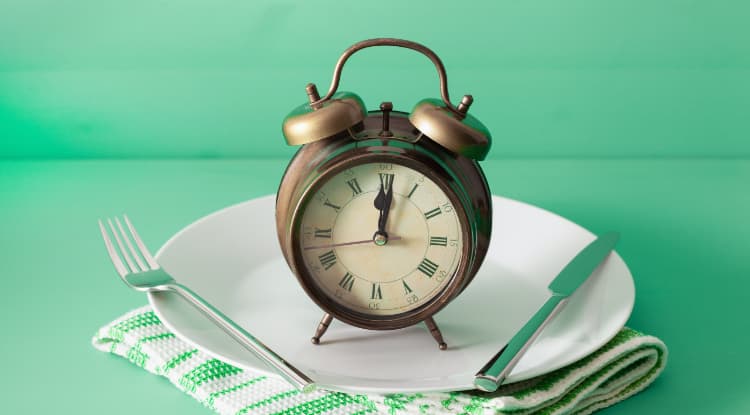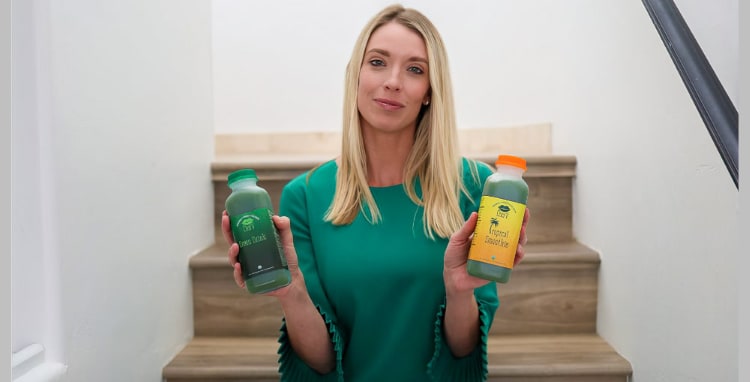
Now that your Green Drink has arrived, what do you do with it? Here are the top five ways to use Green Drink.
Should you chug the whole thing in one sitting like you’re at a frat party? Or do you daintily sip it like Mary Poppins drinking a cuppa tea? Whether you chug or sip is totally up to you. More important is learning how to incorporate Green Drink into your everyday routine.

Top 5 ways to use Green Drink #1: Perfect Morning Detox
When you wake up in the morning, it’s the perfect opportunity to gently detox your liver. So here’s how to do it. After you wake up in the morning, drink at least 8 ounces of water. Optional: add a lemon wedge or some lemon juice. (Lemon juice helps assist the detox process.)
But don’t have your Green Drink just yet. Wait for about half an hour. Give your liver some time to do its purification thing. This is the one time of the day when your liver won’t have to process anything you’ve eaten.
OK, now it’s time to have some Green Drink. Drink at least 16-24 oz. in the morning. The 7 certified organic green veggies will quickly fuel your cells with the nutrients they need for energy and metabolism.
If you’re going to eat solid food in the morning, try to wait half an hour after consuming Green Drink. Again, this is the time of day when you want to give your liver the best chance to flush out trapped toxins.
Many people make the mistake of eating in the morning, before drinking water and Green Drink. When you eat food, your liver doesn’t get a chance to rest and detox. In fact, not eating breakfast is another way you can use Green Drink, which leads us to the next way to use it….

Top 5 ways #2: Wait Until You’re Hungry
I actually wait until I FEEL hungry before having my first serving of daily Green Drink. It’s amazing … after two 8-ounce servings, my hunger instantly vanishes. And then, I’ll actually wait a little longer before I eat my first solid meal of the day.
If you want to accelerate your weight loss, do this before every meal. Wait until you’re hungry, then have some Green Drink. If you want to make your Green Drink last longer, you can do 8 oz. in the morning and then 4 oz. before both lunch and dinner.

Top 5 ways #3: Drink it All Day
A Green Drink customer owns a yoga studio right down the street from where our East Coast Chef V Cafe is located. (If you’re ever in West Caldwell, NJ, stop by and say hi!). From time to time, random people will come into our cafe and say, “We saw this woman in great shape with your drink. She told us she gets a big jug of Green Drink in the morning and sips on it all day until dinner.”
Now, you don’t have to just eat one meal a day. But if you want to lose some weight quick, say, for a wedding, having Green Drink for breakfast and lunch (or breakfast and dinner) is an awesome way to shed the pounds, fast.

Top 5 ways #4: Intermittent Fasting
You’ve probably heard of intermittent fasting because it’s become very popular. My husband, Brandon, and I have actually been doing intermittent fasting long before it became a health trend. We feel great doing it. It’s not a diet, it’s more of a lifestyle!
In case you’re not familiar with it, here’s the skinny: When you go several hours between dinner and your first meal the following day without eating, your body burns its reserves of fat for energy, instead of sugar. Brandon and I usually fast for 16 hours.
Not only will fasting 16 hours help you get leaner, it offers other health benefits such as improved focus and concentration. Studies suggest it might even lengthen your life. But you don’t have to fast for 16 hours at first.
For the first week, try 12 hours. Push it to 14 hours the following week and then 16 if you’re feeling great. Sixteen hours has shown the most benefit. But even if you just fast for 12-14 hours, you’ll likely experience positive results.
The most important thing is when you break your fast, break it with 16-24 oz of Green Drink. My body is so used to fasting that I’m never hungry in the morning. Come to think of it, that’s another way I use Green Drink….
For my complete Green Drink Intermittent Fasting Guide click here

Top 5 ways #5: Make It Into A Smoothie
To make a smoothie: Add ½ cup ice and ½ cup unsweetened almond milk.
For Green Drink smoothie recipe ideas, I’ve included this handy download for you.





















































